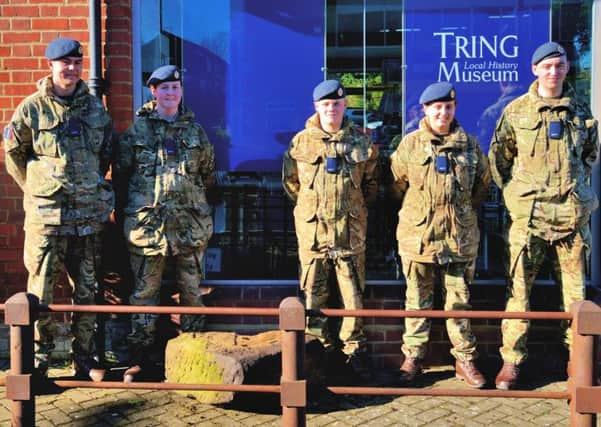Historic railway sleeper settles in to new home


The artefact, which dates back to the 1830s, was one of 160,000 tonnes of stone sleepers used to build the first railway line from London to Birmingham in Victorian times – part of which travelled through Tring.
But just a few years after it opened in 1838, engineers realised the stone sleepers could not cope with the heavy steam locomotives so replaced them with their wooden counterparts – rendering the stones useless.
Advertisement
Hide AdAdvertisement
Hide AdMany of them ended up in gardens just like the one at Tring station – and now the Tring Local History Museum has added it to its railway exhibition.
John Savage, membership secretery at the museum on Brook Street, said: “The stones were quarried in Yorkshire, brought down the North Sea on ships, up the Thames and then delivered where they needed to go via the canals or by horse and cart, as there were no major roads in those days.
“It was a colossal undertaking but they soon found that they weren’t satisfactory because they were too rigid, so that’s when they replaced them with stone sleepers.”
But moving the stone – which weighs the equivalent of a third of a tonne – was no mean feat, and the museum drafted in some help in the form of six willing trainees from RAF Halton.
Advertisement
Hide AdAdvertisement
Hide AdTim Amsden, chairman of the Tring Local History Society, offered up his truck to the eager volunteers, who lifted the stone onto a pallet before loading it onto the back of the vehicle and driving it nearly two miles to its new home outside the museum.
Mr Savage, who lives in the town with wife Shelley, said: “The trainees were very charming and we’re all getting on a bit, so they were definitely the right people for the job.”
The stone now sits proudly in front of a display panel, which will be updated with its history so that passers-by can read all about where it origintated from.
Mr Savage said: “If you didn’t know about railways then you would have thought it was just a lump of stone, and it could have sat there for another 170 years!
“But if you look closely, you can see the indentations and two holes where it was bolted to the track.”